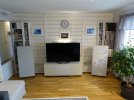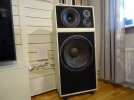people are splitting hairs
does anyone make their own drivers? spin their own cable?
I am reminded of 'project cars' where really you just engage an engine builder, a panel guy, a paint guy....
if people are doing components to your spec then i feel that is fair enough... but again the end results matter
this also comes down to what people expect to acheive? I mean we can all rattle off the stuff we want... 20-20 flat a ruler, close to 90dB sensitivity... triple driver, triple taps...
does anyone make their own drivers? spin their own cable?
I am reminded of 'project cars' where really you just engage an engine builder, a panel guy, a paint guy....
if people are doing components to your spec then i feel that is fair enough... but again the end results matter
this also comes down to what people expect to acheive? I mean we can all rattle off the stuff we want... 20-20 flat a ruler, close to 90dB sensitivity... triple driver, triple taps...


